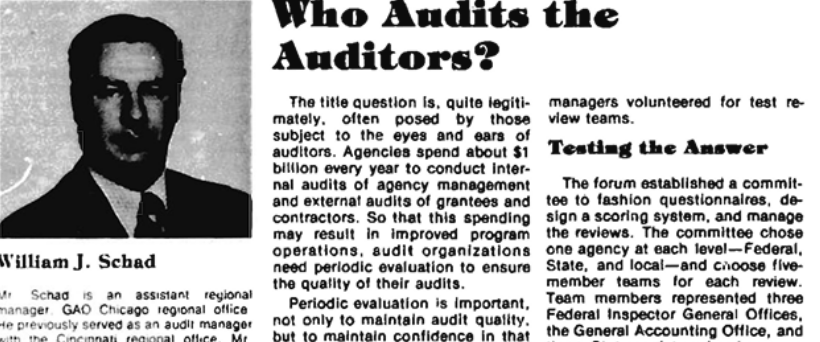In the realm of financial accountability and good governance, auditors play a critical role in ensuring that organizations, whether public or private, adhere to the highest standards of transparency and accountability. Audits are designed to provide a comprehensive and objective assessment of an organization’s financial practices, but who ensures that the auditors themselves adhere to similar standards of quality and integrity? This question has long been a subject of concern and discussion, and it gains even more relevance in today’s complex and ever-evolving financial landscape.
The need for periodic evaluation of audit organizations to guarantee the quality of their audits and maintain confidence in that quality has been recognized for decades. A noteworthy article from the Summer 1980 edition of the GAO Review sheds light on this matter. In that article, the Midwestern Intergovernmental Audit Forum presented an evaluation guide with the intent of establishing standards for auditing organizations to meet, as well as criteria for evaluating their compliance. This pioneering effort aimed to foster intergovernmental cooperation and understanding in the realm of auditing.
The Midwestern Intergovernmental Audit Forum’s Evaluation Guide
The Midwestern Intergovernmental Audit Forum recognized the importance of holding auditing organizations accountable for their work. The organization drafted an evaluation guide, which included a set of 52 evaluation standards and aids to help assess compliance. These standards and aids were designed to scrutinize various aspects of auditing organizations to ensure the highest level of quality and integrity.
Key Elements of the Evaluation System
The evaluation system outlined in the GAO Review article consisted of several key components, including:
- Overview of the Project: This served as the foundation for the evaluation process, outlining the goals and objectives.
- Evaluation Standards and Aids: These were the heart of the system, with 52 standards and accompanying aids to guide the evaluation process.
- Bylaws for a Managing Committee: To establish governance and oversight.
- Scoring and Compliance Scheme: To objectively measure and assess compliance with the standards.
- Report Format: To ensure that the results of the evaluation were communicated effectively.
- Engagement Letter: A typical contract outlining the terms of the assessment.
- Questionnaires: These were used to gather input and feedback from various stakeholders, including audit staff, report users, and auditees.
The Scope of Evaluation
The evaluation guide was comprehensive in its approach, covering various aspects of auditing organizations, including:
- Organizational Planning and Controls: To ensure proper organization and management of audit activities.
- Independence: To guarantee auditors’ independence and impartiality.
- Qualifications: Ensuring that auditors possess the necessary expertise and qualifications.
- Supervision: Evaluating how audit processes are overseen.
- Work-Papers: Assessing documentation and record-keeping practices.
- Legal and Regulatory Requirements: Ensuring compliance with laws and regulations.
- Internal Control: Evaluating the strength of an organization’s internal control systems.
- Financial Audit Reports: Examining the quality and accuracy of financial audit reports.
- Reporting Procedures: Assessing the process for communicating audit results.
- External Audits: Evaluating relationships with external audit bodies.
Interconnectedness and Cooperation
One of the most significant takeaways from the GAO Review article is the emphasis on intergovernmental cooperation and understanding as essential elements in developing such an evaluation system. It recognizes that the effectiveness of the audit process and the trust in its outcomes depend on cooperation among different stakeholders, including program managers, legislators, and other audit groups. The system developed by the Midwestern Intergovernmental Audit Forum aimed to strengthen this cooperation.
In Conclusion, the 1980 GAO Review article highlights the crucial importance of holding auditors accountable through periodic evaluations. It also underscores the significance of establishing clear evaluation standards and criteria to ensure the quality and integrity of audits. While this article is from over four decades ago, the principles it introduced still hold immense relevance in today’s world of auditing. Ensuring that the auditors themselves are audited is a fundamental step in maintaining trust and transparency in financial accountability processes.
Has the auditing process improved since 1980? We’ll let you decide.
